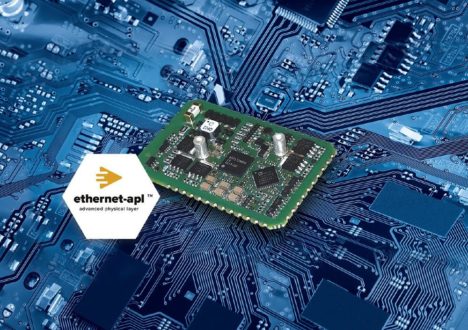
Flash Data Retention & Read Disturbance Solutions from Innodisk.
The quality of a flash cell is not defined exclusively by the number of programming and erase cycles until it can no longer be written, erased or read. The so-called data retention time is the defined period of time during which the flash can hold the data without refreshing. Data Retention, then, describes the ability of NAND flash to retain data that has been stored for an extended period of time. "Read Disturb" is a phenomenon that affects adjacent memory cells when a single cell is read frequently. This can also lead to data loss. These effects require special functions to combat data preservation.
Read interference can occur when the same cell in a block is accessed frequently. This occurs when a user repeatedly checks a certain piece of information on their device. For example, this could be a phone number. This is because reading data in one cell causes the threshold voltages of other cells in the same block to change to a slightly different value. Each time data stored on a cell is accessed, a read voltage is sent through all cells within the block. The cells where the voltage is applied then have electrons emitted into the open gate, causing the electrons stored on those cells to change. Although this is normally harmless, the effects of this voltage shift are amplified when a single cell is read frequently, and in some cases data on adjacent cells can become completely inaccessible.
The ability of NAND flash to store electrons is limited as the stored electrons drain away over time. This causes ECC errors to occur and data to be lost. There are several reasons why data storage is a problem with NAND flash. Due to the structure of the flash cell, higher temperatures cause data to degenerate at a very high rate. As the number of P/E cycles increases, the cell weakens further, resulting in lower data retention capacity.
Because high electric fields are generated during both programming and erasing of NAND memory cells, the oxide layer around the floating gate in the cell can degrade over time as the number of P/E cycles increases. This is especially true for the tunnel oxide layer below the floating gate. Using 100-bit errors as the standard for data retention, data retention after 2200 P/E cycles is about 48 days, but after 3200 P/E cycles, data retention drops to about 16 days.
Innodisk’s iRetention 2.0 technology consists of preventive and corrective features to combat flash memory’s data retention and read corruption shortcomings.
Dynamic microcharge periodically and sequentially selects a block and randomly reads a page. This microcharge charges all cells of the block once through the read process, which offsets the negative effects of storage. Similarly, Smart Read performs a read task on the entire SSD during boot to ensure better data integrity in future read cycles.
Dynamic Scan periodically scans the SSD to detect potentially corrupt data and performs the refresh process, which includes flushing and page loading, to extend the life of each data block.
Together, these technologies virtually eliminate the risk of SSD data loss and improve data retention for Innodisk’s products.
SSD drives are more robust than other storage media, which is why they are used especially in harsh environments. Nevertheless, data storage can cause problems. The quality of a flash cell is not only defined by the number of programming and erasing cycles. Data Retention Time is the period of time the flash can hold the data without refreshing. Read Disturb affects adjacent memory cells when a single cell is read frequently. Both can lead to data loss. Due to the structure of the flash cell, higher temperatures cause data to degenerate at a very high rate.
Innodisk’s iRetention 2.0 technology combats the problems of flash memory during data storage and read failures. Dynamic Microcharge and Smart Read during the boot process leads to better data integrity. Dynamic Scan periodically scans the SSD to detect potentially corrupt data and performs the refresh process, which includes flushing and page charging, to extend the life of each data block. Together, these technologies virtually eliminate the risk of SSD data loss and improve data preservation for Innodisk’s products.
#Innodisk #SSD #DataRetention #iRetention #DynamicMicroCharge #SmartRead
Innodisk Europe B.V.
Pisanostraat 57
NL5623CB Eindhoven
Telefon: +49 (152) 5100 6027
http://www.innodisk.com/
Innodisk Europe B.V.
Telefon: +49 (152) 5100-6027
E-Mail: Patrik_stocks@innodisk.com
Marcom360
Telefon: +49 (7083) 933745
E-Mail: edgar.huber@marcom360.de
![]()





